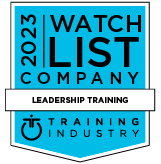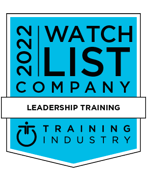- Step 1: Start with Self-Awareness—Get the Data, Ditch the AssumptionsStep 2: Define Success—Set Clear, Measurable GoalsStep 3: Build Habits for Long-Term GrowthStep 4: Don’t Go It Alone—Leadership Is Not a Solo JourneyStep 5: Celebrate Wins, Keep Pushing ForwardFinal Thoughts: Leadership Development Is Intentional
Step-by-Step Guide to Creating Your Leadership Development Plan

Contents
- Step 1: Start with Self-Awareness—Get the Data, Ditch the AssumptionsStep 2: Define Success—Set Clear, Measurable GoalsStep 3: Build Habits for Long-Term GrowthStep 4: Don’t Go It Alone—Leadership Is Not a Solo JourneyStep 5: Celebrate Wins, Keep Pushing ForwardFinal Thoughts: Leadership Development Is Intentional
Great leadership doesn't just happen by chance; it’s built through consistent effort, deep self-awareness, and a clear plan. To elevate your leadership and leave a lasting impact on your team, you need a roadmap designed to meet your growth needs.
In this guide, I’ll walk you through creating a Leadership Development Plan that transforms both you and your team.
Step 1: Start with Self-Awareness—Get the Data, Ditch the Assumptions
Self-awareness is the foundation of leadership. As the saying goes, “You can’t fix what you don’t know is broken.” Yet many leaders assume they know their strengths and weaknesses without ever gathering honest feedback from those they lead daily.
95% of people believe they’re self-aware, but only 10-15% actually are (Tasha Eurich). Closing this reality gap is critical to uncovering your blind spots and becoming a more effective leader.
Here’s how you can start:
- Seek feedback: Use tools like 360-degree assessments to get unfiltered insights from peers, direct reports, and supervisors. Actual data, not guesswork, will show how others see your leadership.
- Reflect on the feedback: It’s not always easy to hear, but growth begins when we confront the areas that need improvement. Get curious about the data, not defensive. All feedback is a gift.
- Reflection Prompt: When did you last ask your team for honest feedback about your leadership? How specific was it? Just asking, “Can you please give some feedback on my leadership?” will not do. Reframe with something like, “Can you give me some feedback on what is working and what is not when it comes to me providing you with the clarity you need to perform well?”
Step 2: Define Success—Set Clear, Measurable Goals
With self-awareness in place, it’s time to get clear on what success looks like for you. What kind of leader do you want to be? What skills or behaviors do you need to develop to get you there?
- Set SMART goals: Make them Specific, Measurable, Achievable, Relevant, and Time-bound. For example, if you need to delegate more, a SMART goal might be: “Within six months, I will delegate 30% more tasks to my team to foster ownership and accountability.”
- Align your goals: Make sure your goals match your values and your team's needs. This will keep you motivated and grounded while your team feels heard.
- Reflection Prompt: What leadership behaviors do you want to improve in the next six months? How will you build those skills? How will you know you have been successful? How will you engage your team to support you?
Step 3: Build Habits for Long-Term Growth
Leadership isn’t developed overnight. It’s built on small, consistent actions. James Clear reminds us in Atomic Habits that the key is daily, incremental improvements.
- Break your goals into actions: If your goal is to improve communication, start by ending every conversation with, “Can you repeat back what you just heard?” This will show how well you communicated the point in the first place.
- Set cues: Use reminders or routines, like calendar alerts, to make these leadership habits stick.
- Measure progress: Track how your habits impact your leadership and team performance. Tell your team your intent, and ask them to hold you accountable.
- Reflection Prompt: What small, consistent actions can you start today to be a better leader? How will you hold yourself accountable for these shifts in behavior?
Step 4: Don’t Go It Alone—Leadership Is Not a Solo Journey
One of the biggest mistakes leaders can make is thinking they have to do it all themselves. Even the best leaders need accountability and support.
- Find a partner: Work with a mentor, coach, or trusted colleague to keep you accountable and provide perspective.
- Be transparent: Share your leadership goals with your team. When they see your commitment, they’re more likely to support and trust your journey.
- Ask for feedback regularly: Don’t wait for the annual review. Make feedback an ongoing part of your development.
- Reflection Prompt: Who can hold you accountable and give you honest feedback?
Step 5: Celebrate Wins, Keep Pushing Forward
Leadership development is a journey, not a sprint. Celebrating progress, no matter how small, while staying committed to long-term growth is crucial.
- Acknowledge wins: Celebrating even small milestones—like navigating a challenging conversation or successfully delegating a project—keeps you motivated and reminds you of your growth.
- Stay flexible: Your leadership development plan should evolve as you grow. Be ready to adjust goals and habits as new challenges arise.
- Reflection Prompt: When did you last celebrate a leadership win, and how are you tracking your progress?
Final Thoughts: Leadership Development Is Intentional
Creating a leadership development plan is just the starting point. It’s not the plan that makes you a better leader—it’s the consistent, daily actions you take that lead to real growth and lasting change.
Start with self-awareness: Set clear goals, build habits that stick, seek support, and celebrate the wins along the way. With focus and intention, you can become the leader your team deserves.
Ready to level up? Start today by asking for feedback and take that first step toward growth.
Insights

Subscribe to Our Monthly Newsletter!
For managers and talent professionals who truly believe in putting people first, the CARE to Win blog is your gateway to the latest insights on human-centric leadership. Join us as we champion the people first movement.
Need some time apart? Are we emailing you too often? Just give us your feedback, and we promise we’ll respond. We really do care. And if it’s still too much, just unsubscribe. It’s cool.


